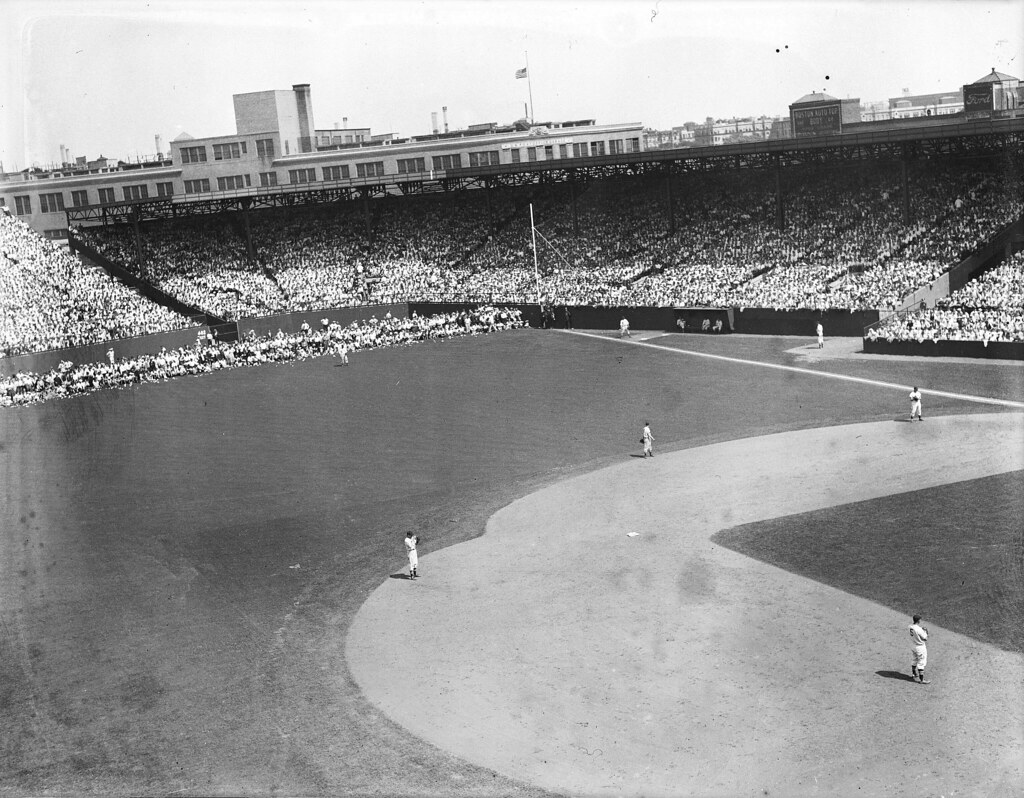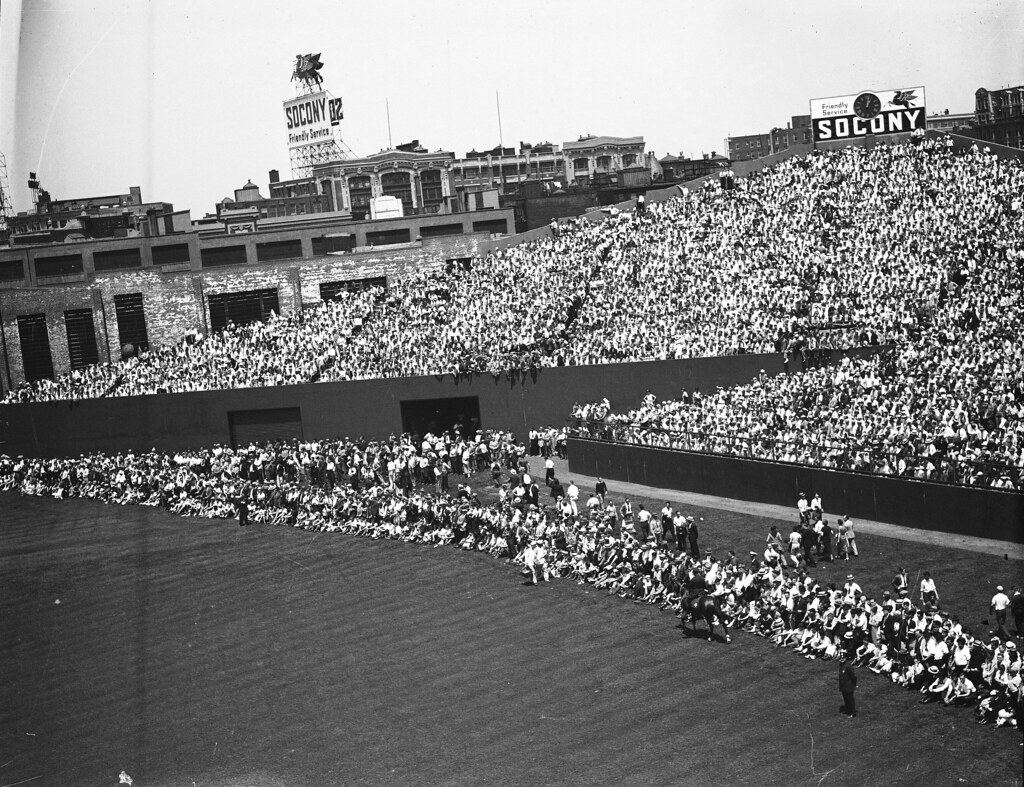First a brief status update. I've broken each of the main sections of the seating bowl into components: The LF pavilion, home plate grandstand, RF/HP connection, RF pavilion, and bleachers. I'm currently adding detail to each section until it's reasonably complete, and rotating around the part (adding seat section signs, ads, textures, concrete supports, etc). The RF pavilion and bleachers are complete, LF pavilion is getting there.
Now, here are some of the weirdest parts of Fenway I've come across, areas that have no logical reason for existing. In no particular order.
Where: the junction of walkways surrounding Section 27 Instead of having the existing home plate grandstand section bisect a new LF seating for the 1934 renovations, they decided to jam the LF into the existing edge of the HP section, and this was the result. Of special note is the single seat wedged behind two walkways.
Where: same
Notice how the walkway height is so dramatically different from the seating section to the right. Amazingly, there is no railing to keep people from tumbling down after tripping getting into their seats, but there is one if you pay more for the loge boxes.
Where: the connection between the CF and RF parts of the bleachers.
Nobody really ever bothered trying to come up with a unified number scheme for the bleachers, so in one walkway you have two rows on the same level.
Where: Dead center in the bleachers
This requires a bit of explanation. Given how the CF bleachers look at Fenway, you can walk up 20 rows of seats to find out that even though you are on the right side of the section (i.e. if you have seat number 4, it makes more sense to be by seat 1 than by seat 25), you are actually next to the Landsdowne St. wall, and have to walk all the way around and back up. This can get slightly annoying in the middle of the game.
Where: LF junction, below GS section 27
This is remarkable for so many reasons. One, you have a row that sits in the middle of a walkway, and still costs upwards of $80. Two, the row is connected to 2x8 wood boards instead of, you know, concrete. Thirdly, we have the ridiculous layout of the concrete itself, visible here:
Altogether, just an astonishing setup. I wouldn't be surprised to see this entire area redone this offseason, since this has clearly been messed up since the removals of the bullpens from the foul lines in 1939.
Unfortunately, I don't have pictures of two of my favorite other entries in the park. One is the concourse portal to nowhere by first base, which appears to just dump you out in an unused, awkward walkway downstairs. And secondly, the single loge section down the LF line that has been built outwards from the concrete by a foot at a later date for no apparent reason.
More to come as update the park.



































